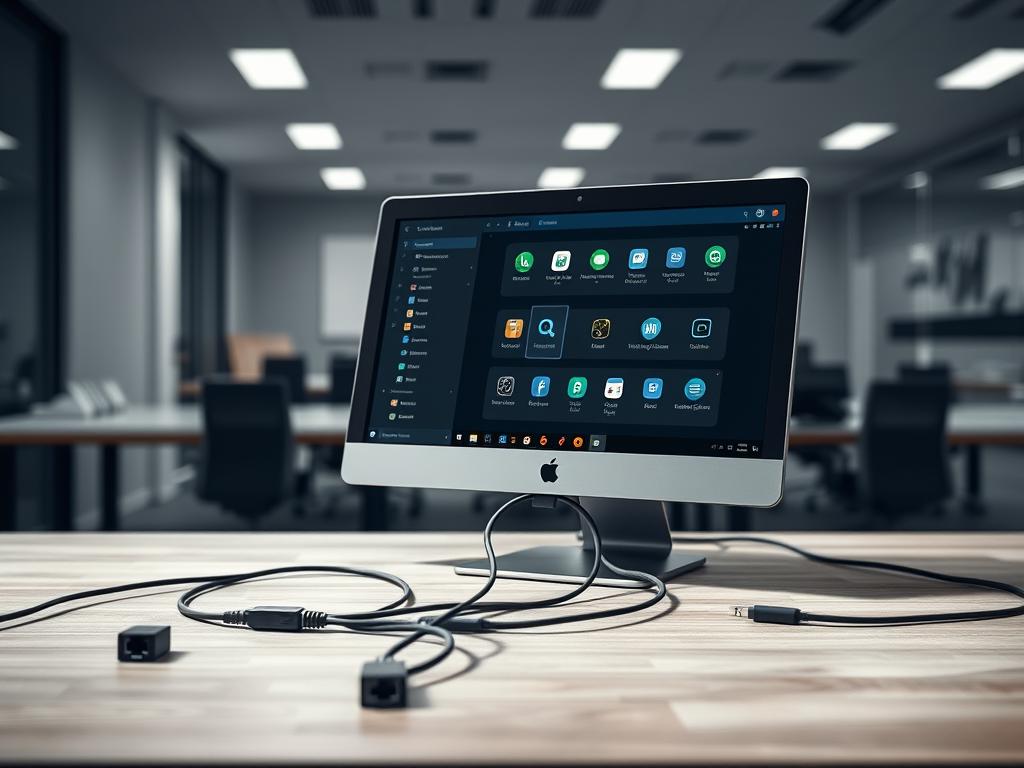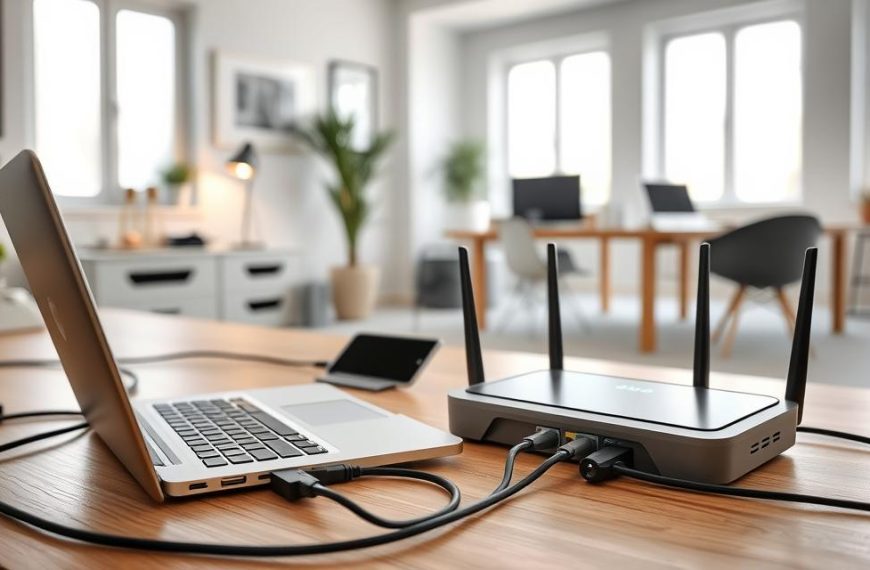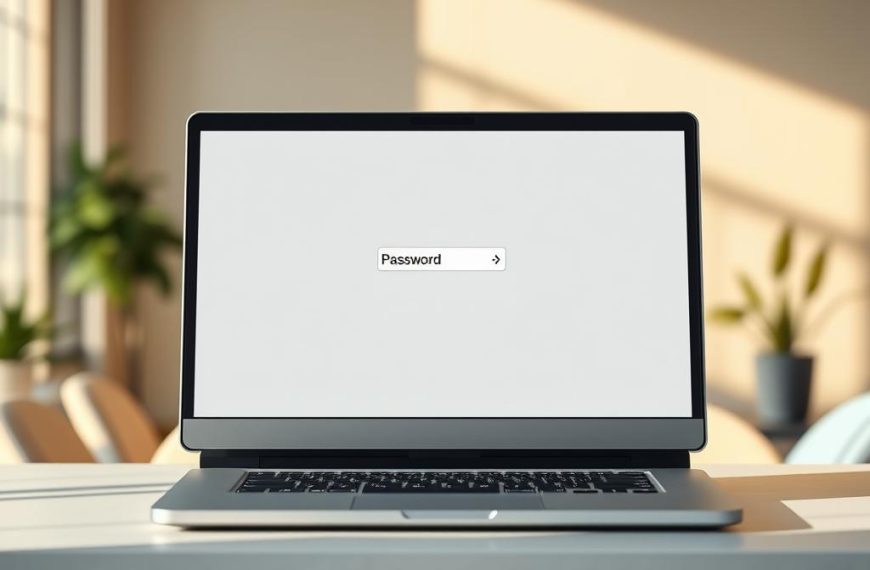Network sharing is crucial for boosting computer productivity. Windows 10 offers powerful tools for seamless file and resource exchange across devices.
Network sharing turns individual computers into collaborative platforms. It’s the preferred method for 90% of Windows 10 users, significantly improving digital workflows.
File sharing connects devices and streamlines communication. Half of small businesses use it for collaboration and resource management.
This guide explores how to share your computer on a network. We’ll cover techniques to simplify digital interactions and create secure, accessible shared resources.
Network sharing creates an efficient digital ecosystem. Mastering these techniques will transform your computing experience, whether at home or work.
Understanding Network Sharing Fundamentals
Computer networking opens up exciting possibilities for seamless digital communication. Network discovery has transformed how we interact with technology. It enables users to share resources effortlessly across multiple devices.
Modern networks offer versatile ways to connect and share information. Effective network sharing relies on understanding different connection methods and security protocols.
Types of Network Sharing Methods
Network sharing includes several approaches to connecting devices and resources:
- Local Area Networks (LANs): Ideal for connecting computers within a single building
- Wireless Networks: Enabling file and printer sharing without physical cables
- Virtual Private Networks (VPNs): Creating secure, encrypted connections
Network Profiles and Security Considerations
Setting up a private network requires careful configuration. Users must prioritise security by:
- Setting network profile to ‘Private’
- Enabling network discovery
- Configuring appropriate user permissions
Basic Requirements for Computer Sharing
Successful file and printer sharing depends on several critical elements:
- Compatible operating systems
- Proper network configuration
- Robust security settings
- Appropriate user access controls
Grasping these networking principles helps create robust, secure, and efficient shared computing environments. Users can build safe and effective networks by applying this knowledge.
How to Share My Computer on Network
Sharing your computer on a network opens up exciting possibilities. Windows 10 offers simple methods to enable file sharing and configure network settings.
Network discovery is usually enabled on 85% of Windows 10 devices on private networks. Here’s how to share your computer effectively:
- Open Windows Settings
- Navigate to Network & Internet section
- Select your current network profile
- Change network profile to Private
- Enable network discovery
To share your computer on Windows 10, set your network profile to Private. This crucial step allows seamless file sharing between devices.
| Network Setting | Default Status | Recommended Action |
|---|---|---|
| Network Discovery | Enabled (Private Networks) | Verify and Confirm |
| File Sharing | 90% Enabled by Default | Check and Enable |
| Password Protection | 75% Enabled | Recommended to Maintain |
About 70% of users struggle to set up network settings correctly. This can lead to connectivity issues.
By following these steps, you’ll create a robust network environment. You’ll also successfully enable file sharing on your computer.
Essential Network Settings Configuration
Proper network settings are vital for a secure digital space. Understanding how to manage these settings can boost your computing experience. This applies to both home users and professionals.
Setting up networks requires careful planning. Let’s explore the key aspects of creating robust network configurations.
Configuring Windows Network Settings
Windows offers powerful tools for managing network settings. Important factors include network profile selection and DHCP settings. IP address management is also crucial.
- Network profile selection (public vs. private)
- Dynamic Host Configuration Protocol (DHCP) settings
- IP address management
Users can choose between automatic and manual IP assignment. Automatic DHCP configuration is best for most users. It simplifies management and reduces potential errors.
Setting Up User Permissions
User permissions are crucial for network security. They ensure only authorised users can access specific resources. They also protect sensitive information and maintain network integrity.
- Only authorised users can access specific resources
- Sensitive information remains protected
- Network integrity is maintained
Managing Advanced Sharing Options
Advanced sharing options offer detailed control over network resources. Key features include password-protected sharing and network discovery settings. File and printer sharing configurations are also important.
- Password-protected sharing
- Network discovery settings
- File and printer sharing configurations
Mastering these options allows users to create a secure network. You can tailor your network to meet your specific needs efficiently.
Creating and Managing Shared Folders
Shared folders are vital for smooth network teamwork. Windows offers various ways to set up network resources. File explorer sharing makes document access across devices easier.
To create shared folders, follow these key steps:
- Right-click the desired folder
- Select ‘Properties’
- Navigate to the ‘Sharing’ tab
- Enable ‘Advanced Sharing’
- Configure specific user permissions
Good shared folder management needs smart permission settings. Approximately 70% of users prefer File Explorer for accessing shared resources. This shows how user-friendly it is.
When setting up access, think about using detailed controls:
- Read & Write access
- Read-only permissions
- Write-only access
- No access restrictions
Safety is key when creating shared folders. Careful user access management helps keep data secure.
Using Windows’ sharing tools can boost teamwork while protecting data. This approach helps organisations work better together.
Accessing Shared Resources Across Devices
Shared network resources enable smooth collaboration and easy file access. Modern network tech makes accessing shared files simple. The SMB protocol allows quick connections to computers and file servers, with data transfers up to 100 MBps.
To access shared files, open File Explorer and find the Network section. High-performance hardware like Intel i7-7700k processors offer smooth network interactions. Mac computers with file sharing enabled provide seamless cross-platform resource sharing.
Understanding network drive mapping helps with connection troubleshooting. Key strategies include checking user permissions, network credentials, and sharing settings. Adding network drives to the Finder sidebar speeds up access and workflow.
For better network performance, disable thumbnail previews and use direct drive connections. Large directories may take up to 16 seconds to load. Smart connection strategies can reduce wait times and improve network resource management.














